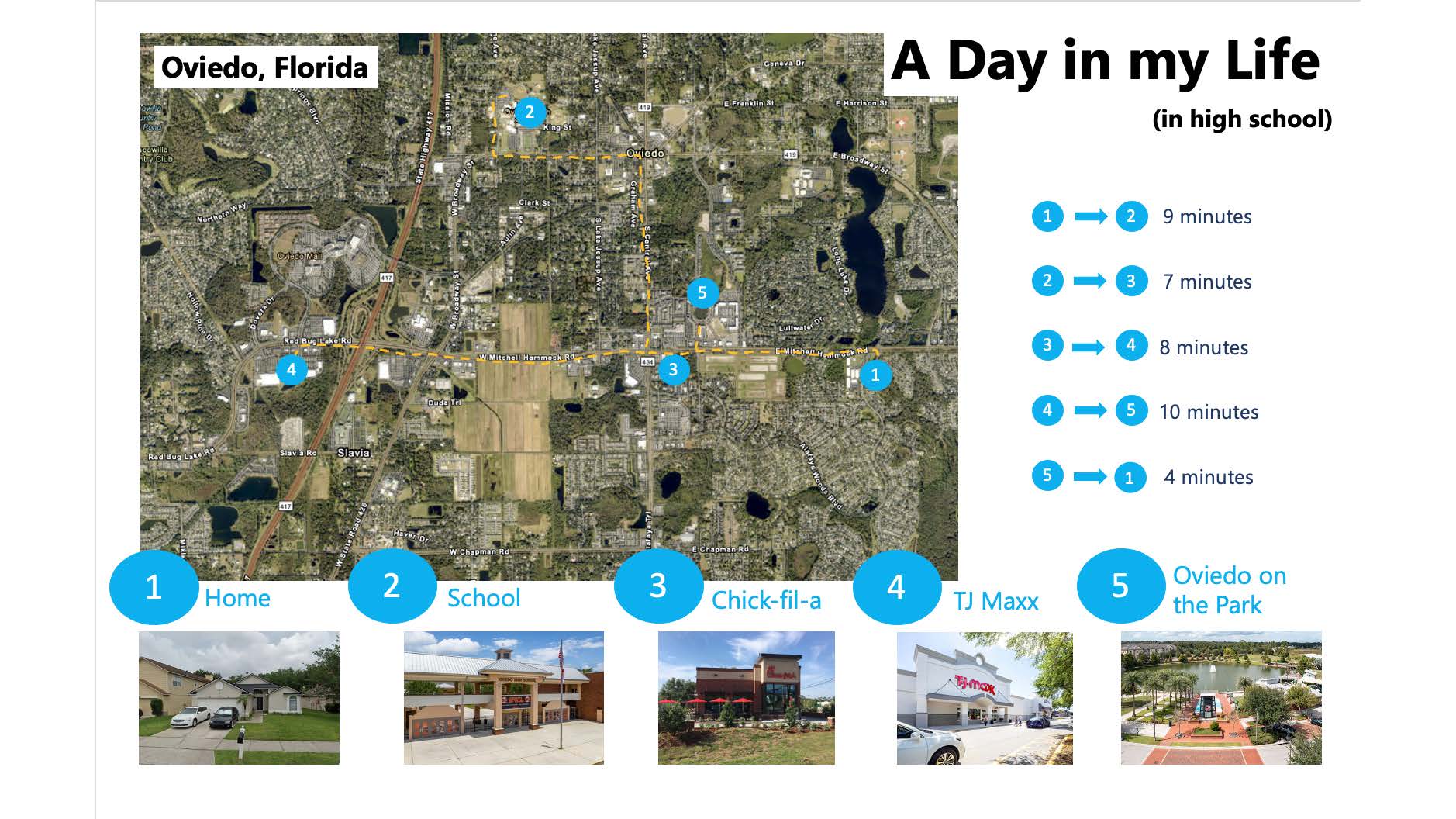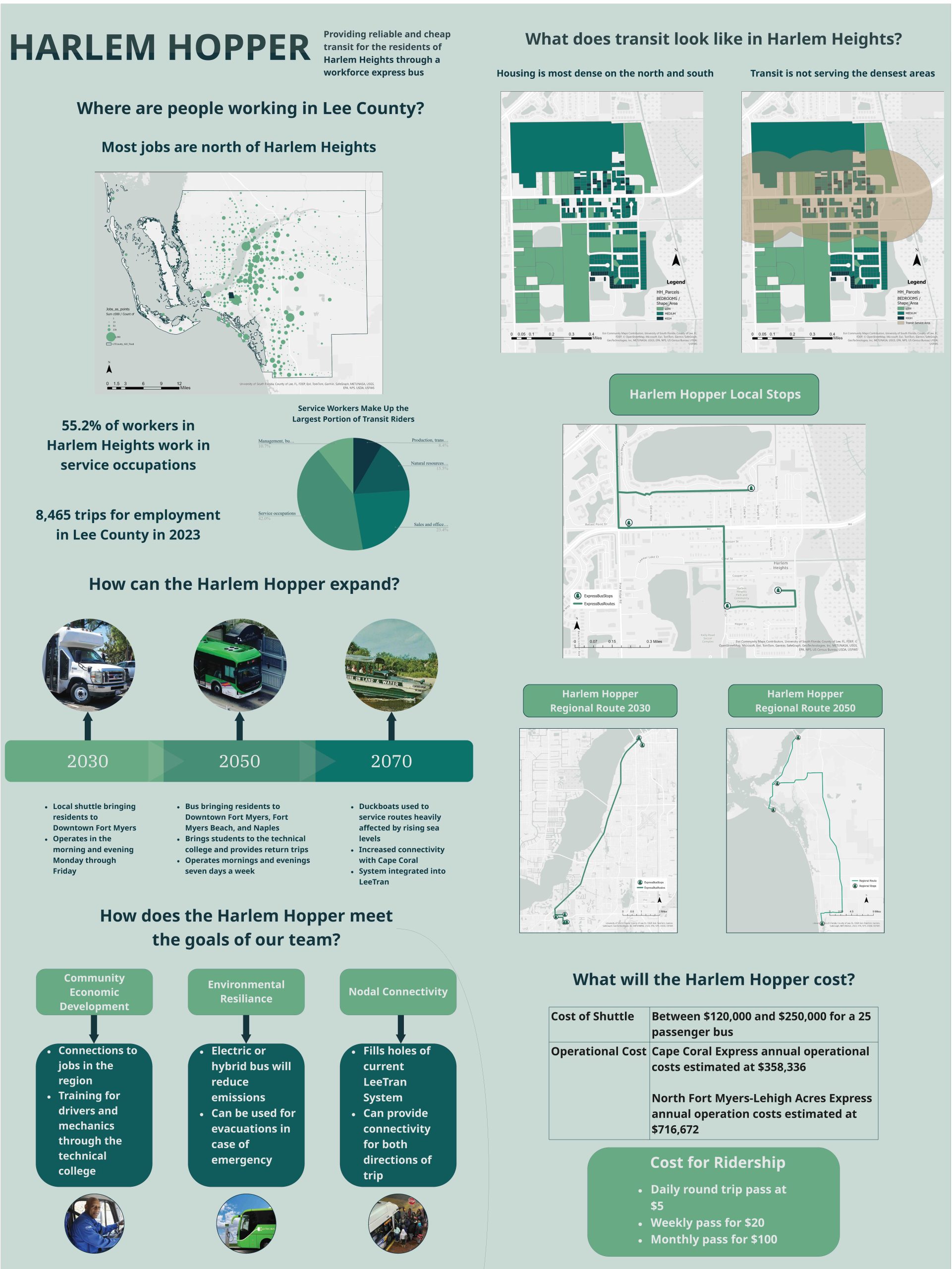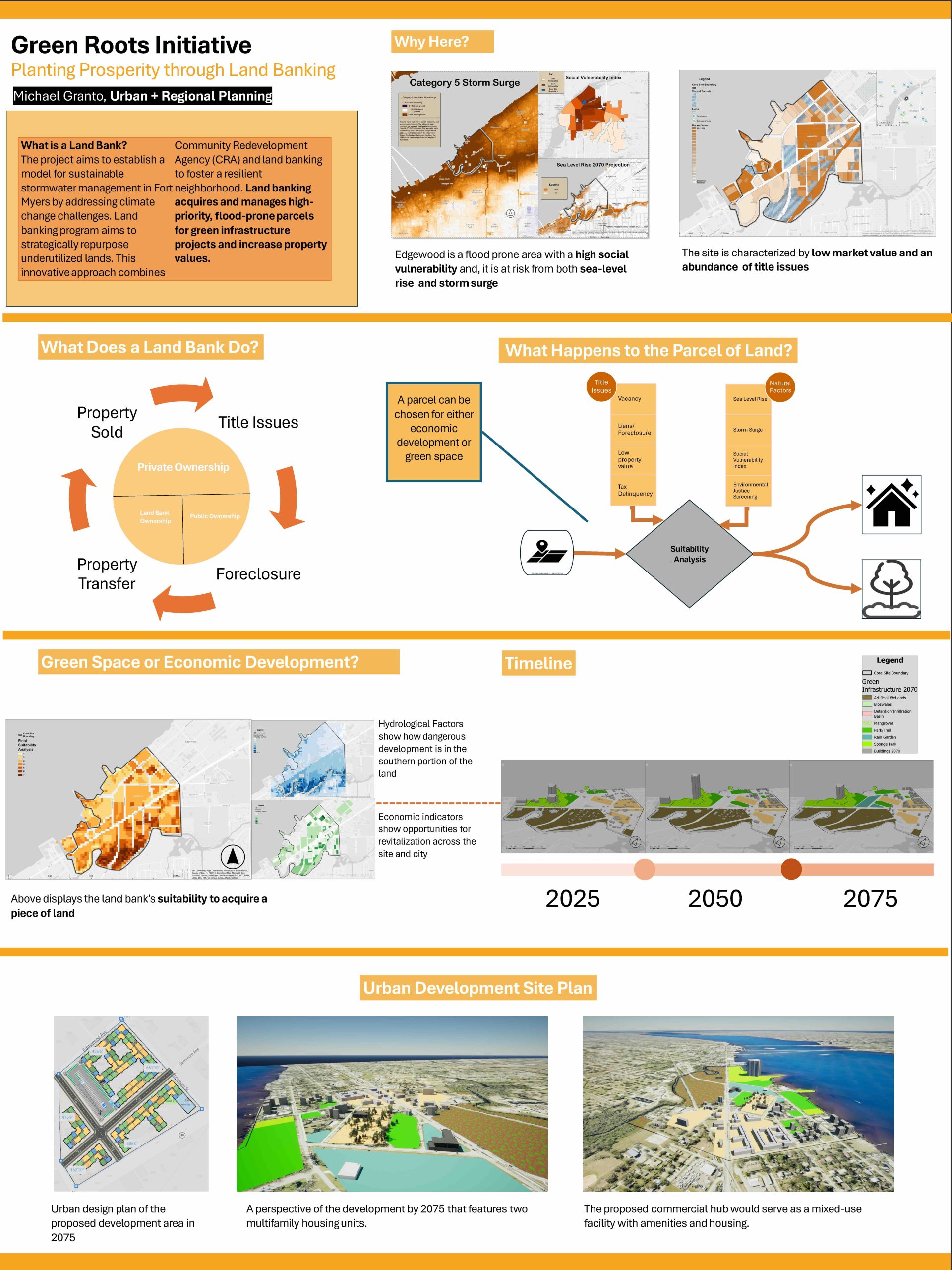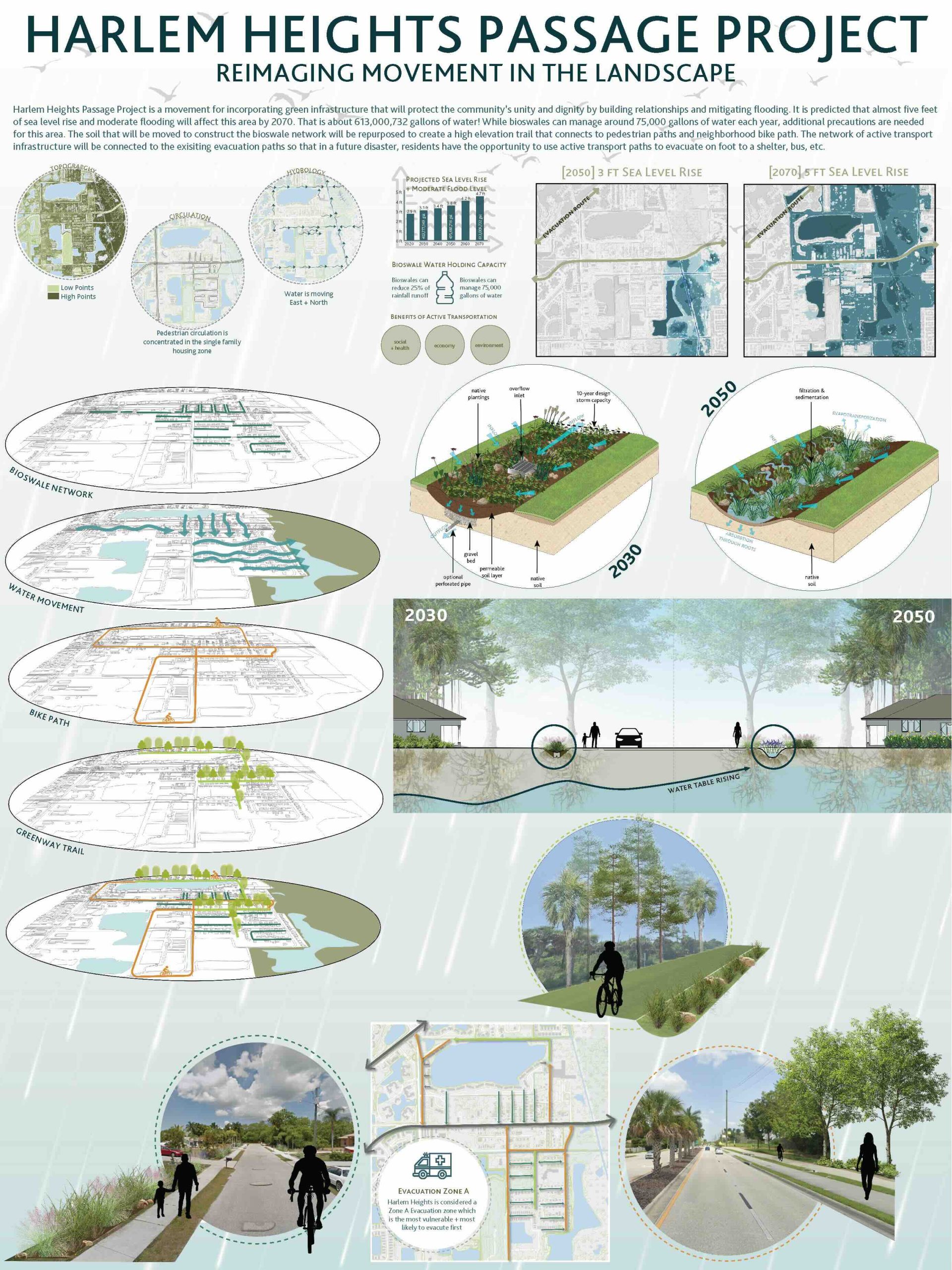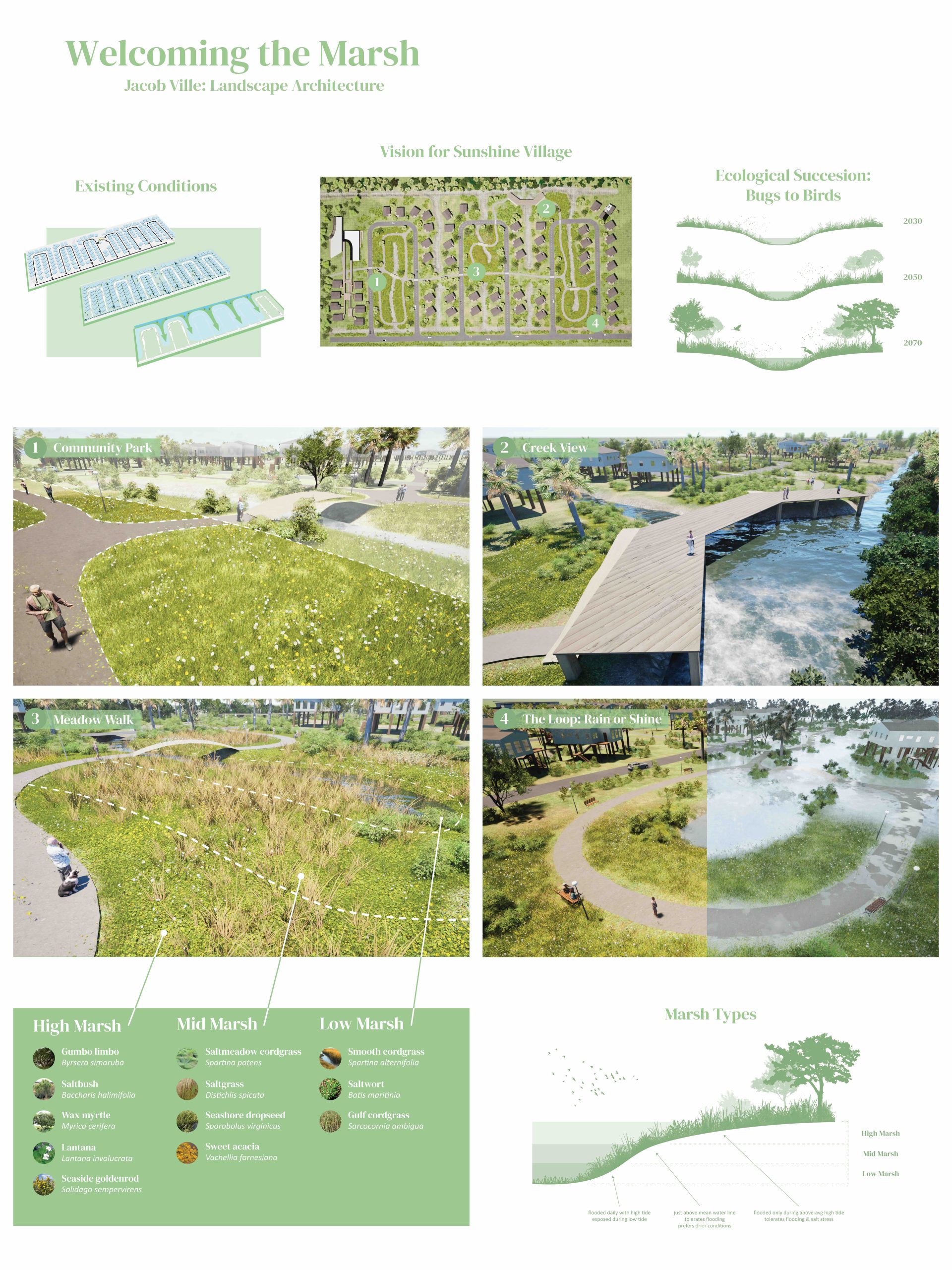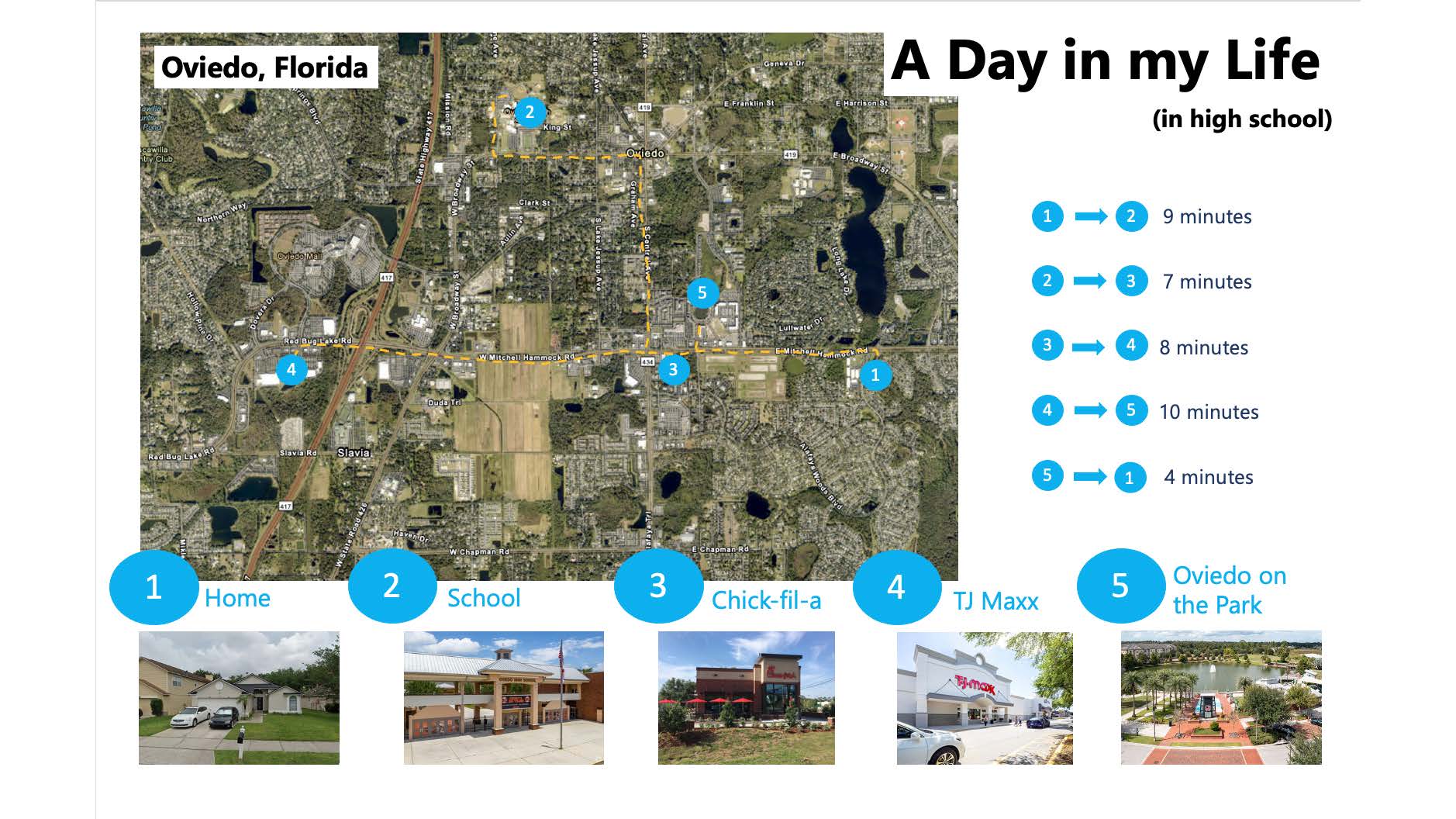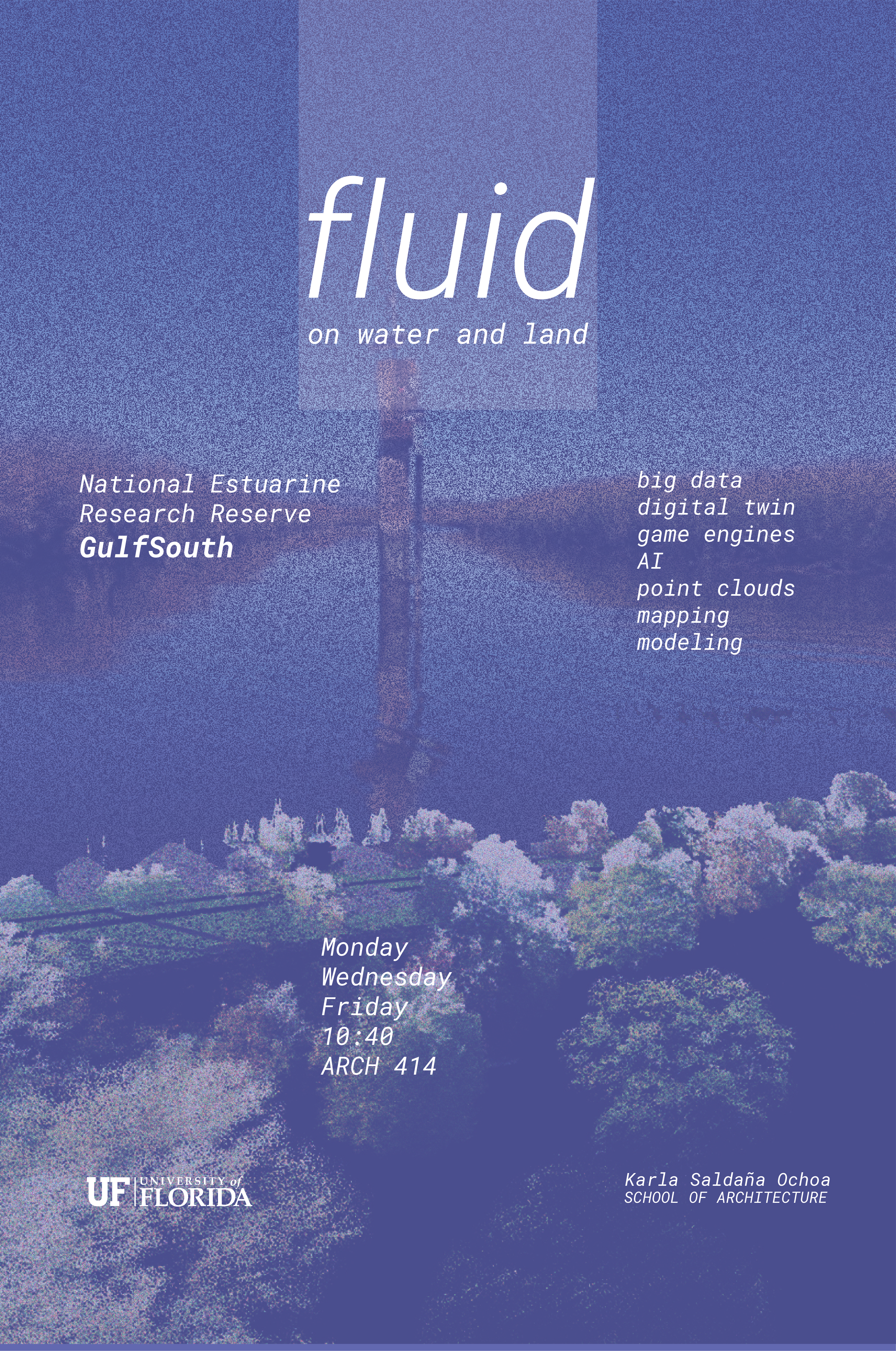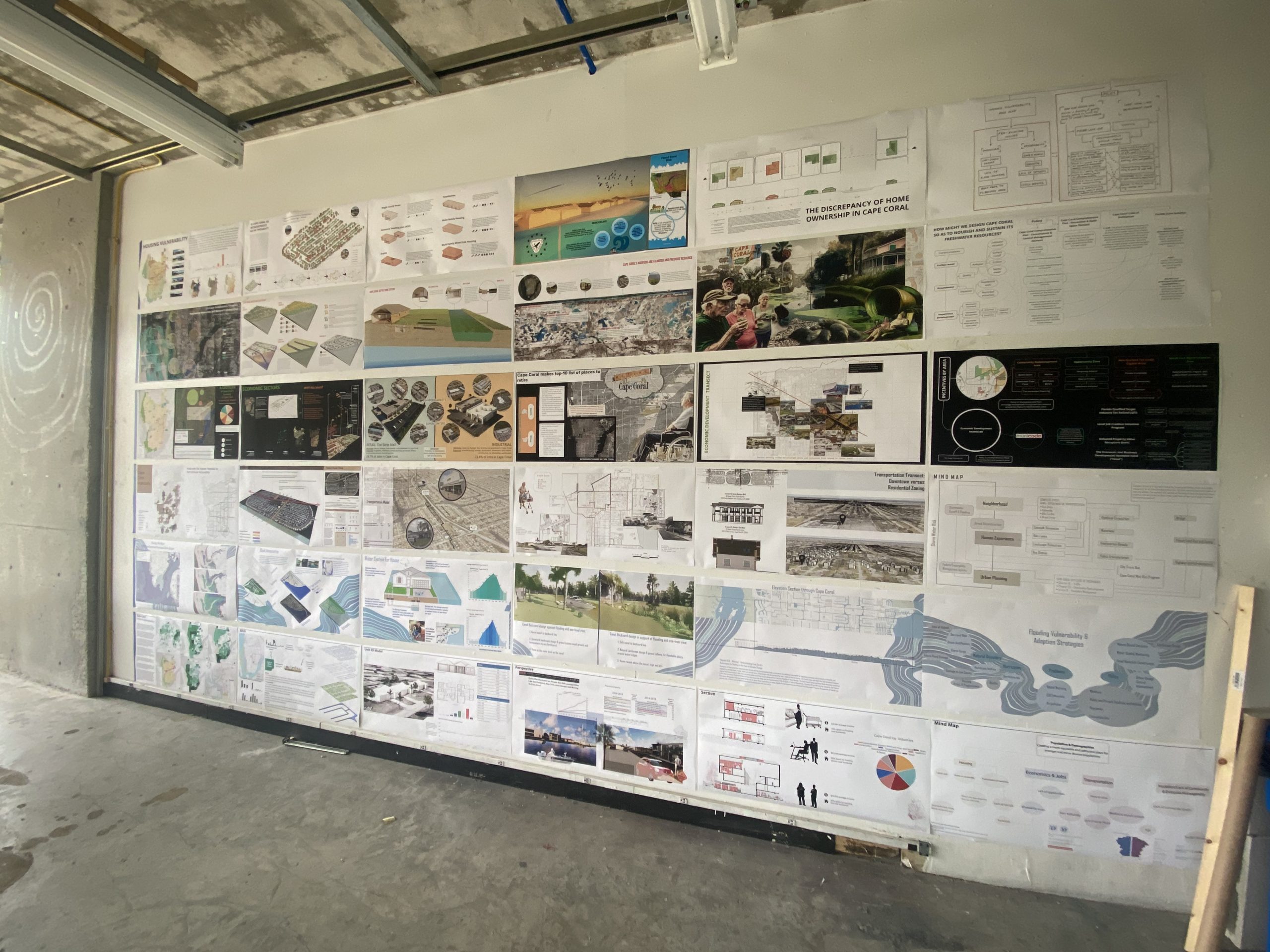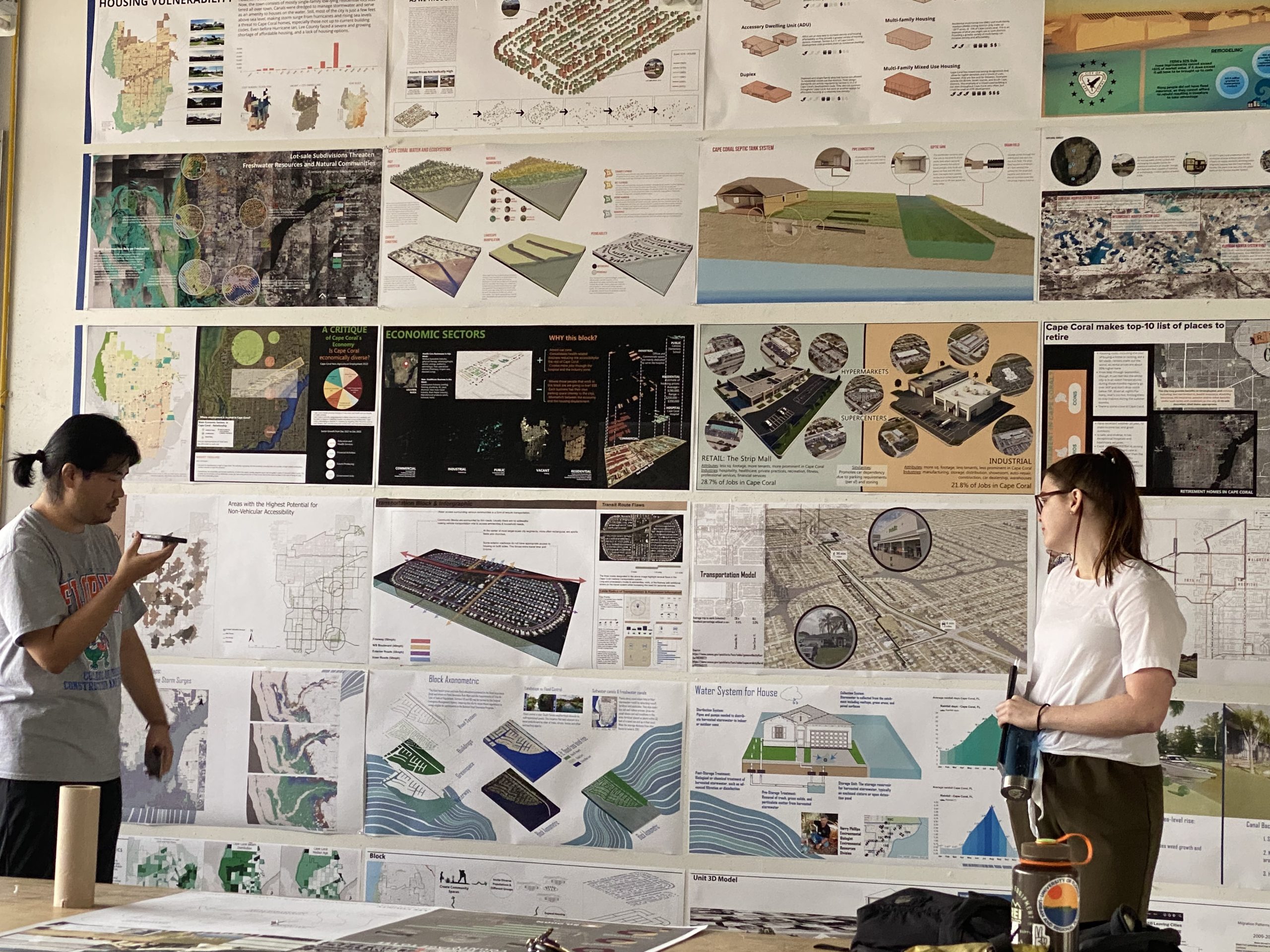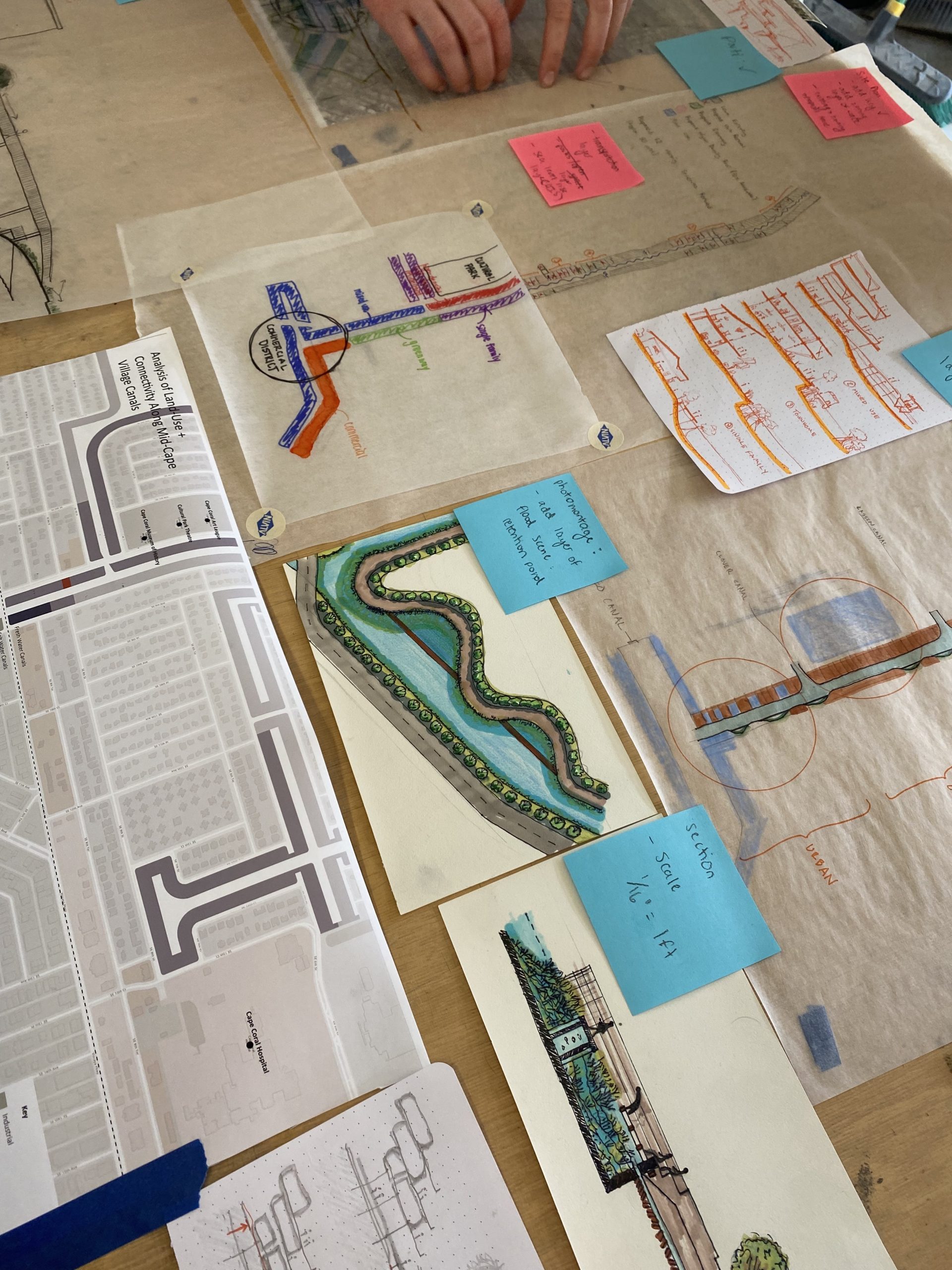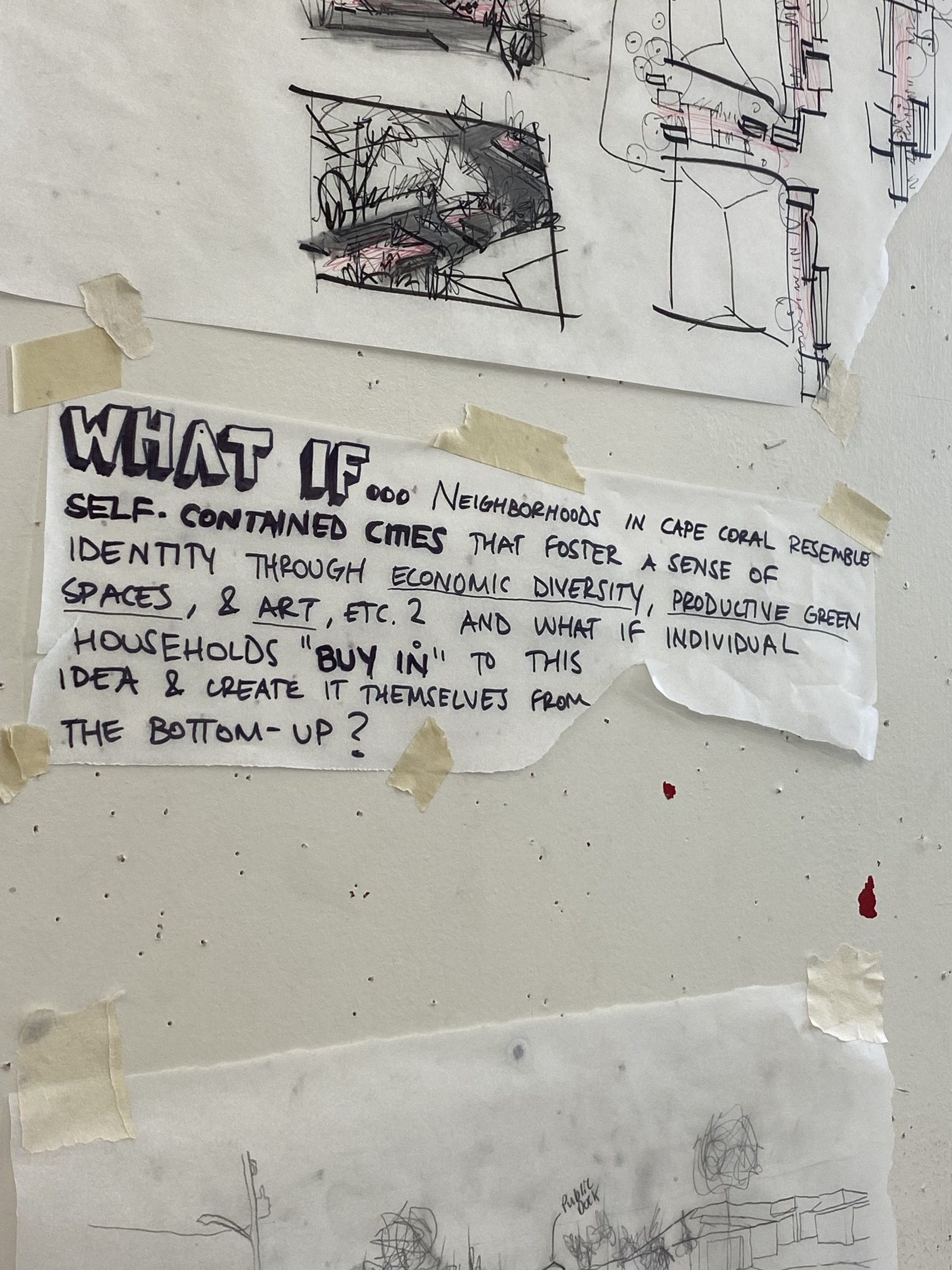Prior Courses
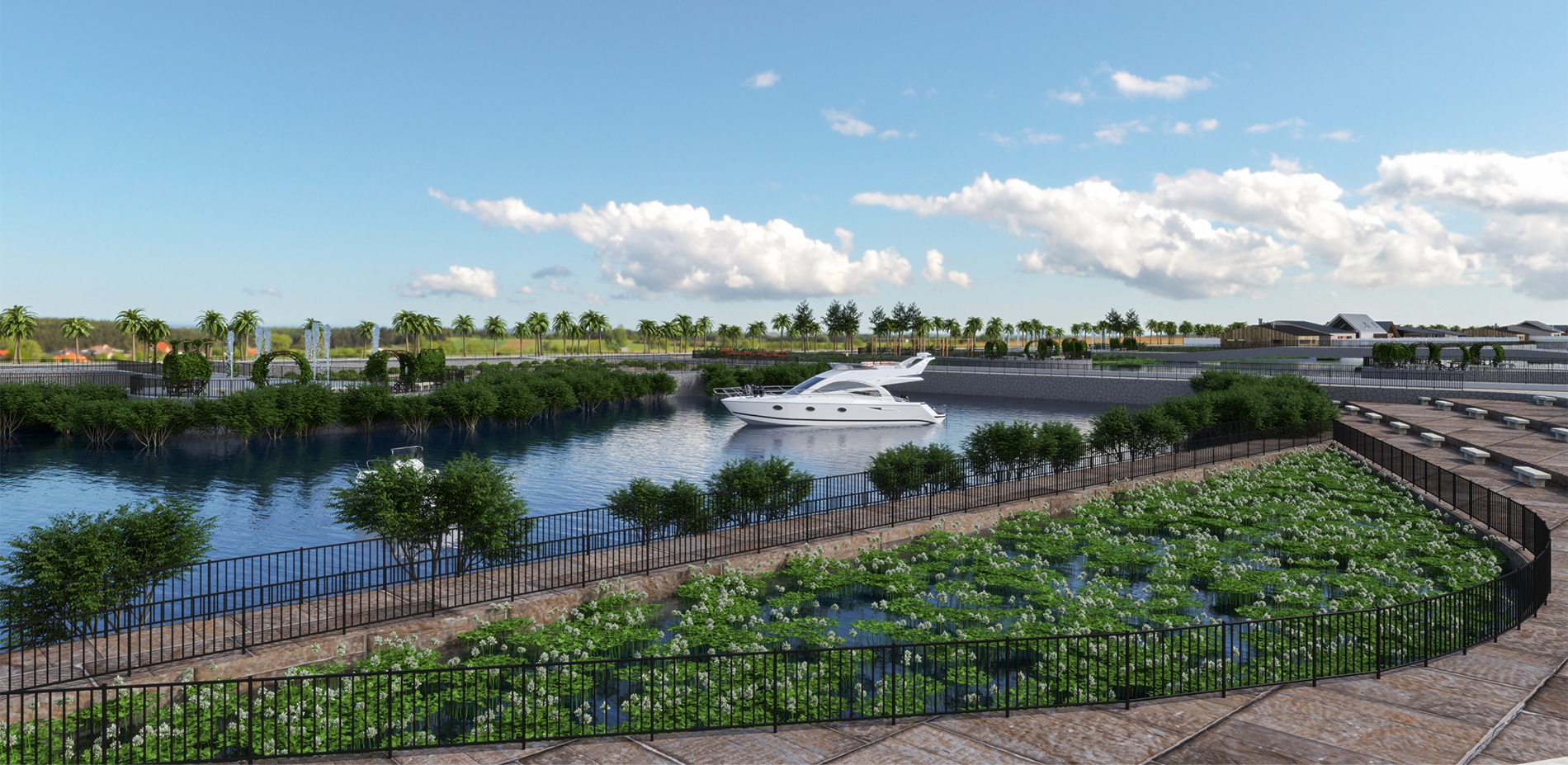
YEAR 1
“retro[future]fitting Cape Coral”
Spring 2023
Disciplines: Architecture, Landscape Architecture, Urban & Regional Planning, Journalism, and Construction Management
Location: Cape Coral, Florida
Overview: This design studio investigates the multi-scalar relationship between land-use patterns, architectural form, housing, infrastructure, water, and ecological conditions of the greater Ft. Myers metropolitan area in the context of its vulnerability to disasters. Multi-disciplinary teams will focus on the city of Cape Coral, a poster child for Florida’s rampant post World War II suburban development, to further understand these systems at the scale of city and neighborhood. Working in teams, students will propose a series of “suburban retrofits” to achieve greater resilience, equity, and sustainability across a range of possible future conditions.
Outcomes: Five student teams proposed a series of retrofits across the Mid-City district of Cape Coral including visions for a new Canal City, Green City, Granular City, Mobility City, and Health City. Specific student projects included proposals for affordable housing redevelopment, transit network/streetscape redesign, redevelopment of canal system, and green space network, among other ideas. Students travelled to Cape Coral to survey residents and meet with city officials to propose their ideas before finalizing their project designs.
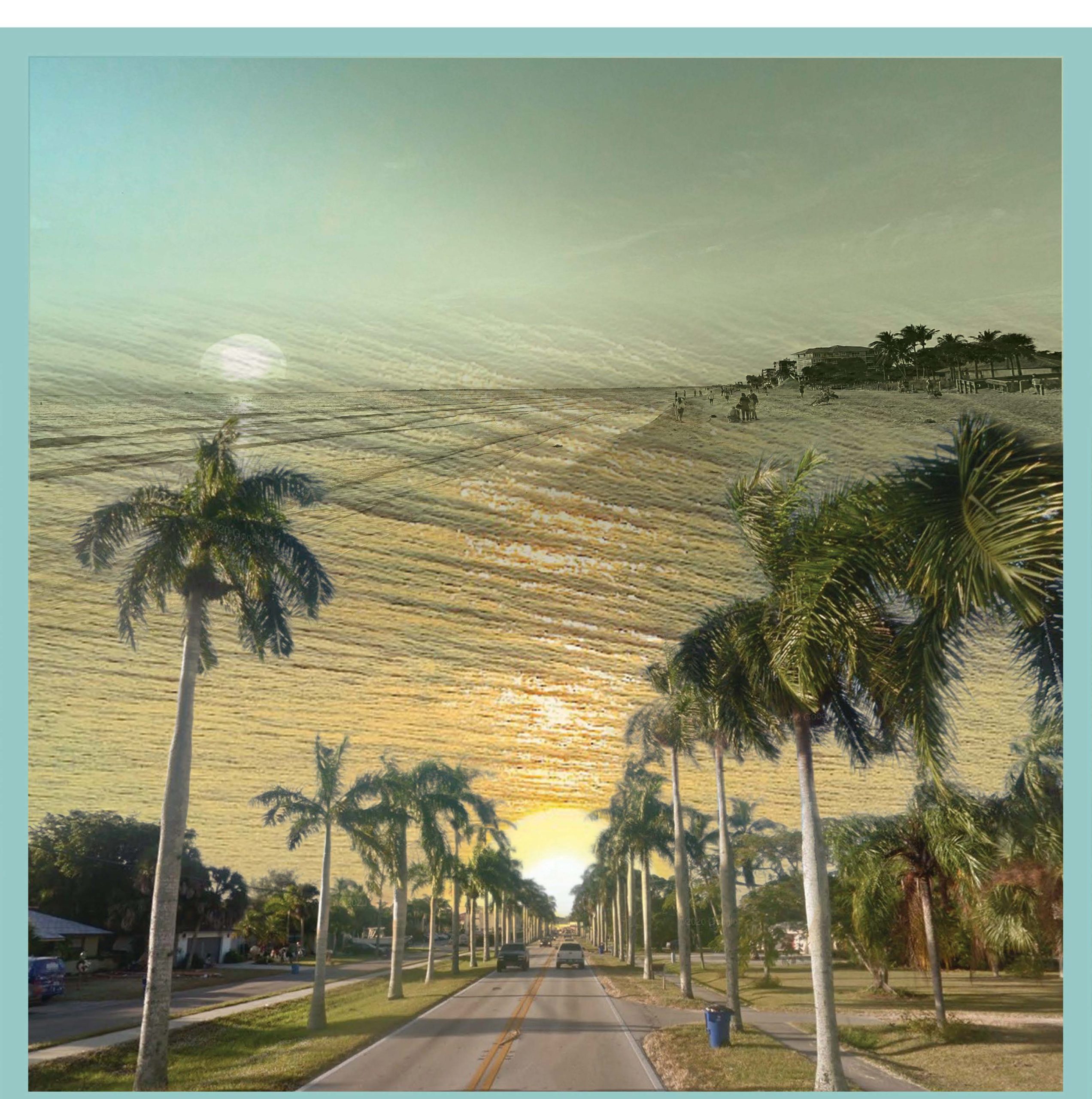
YEAR 2
“Resilient Lee County”
Spring 2024
Disciplines: Architecture, Landscape Architecture, and Urban & Regional Planning
Location: Greater Fort Myers, Florida
Overview: Multi-disciplinary student teams across architecture, landscape architecture, and urban and regional planning explored the concept of a resilient neighborhood ecosystem across several case study areas along the Caloosahatchee River in Ft. Myers region. Following initial team-based projects, students develop individual projects according to their respective disciplines.
Outcomes: Six student teams proposed a series of retrofits across three case study communities in the greater Ft Myers area- Sunshine Village (mobile home, 55+ retirement community), Seaboard area of downtown Ft Myers (mixed-use, low-income area with multifamily housing), and Harlem Heights (majority Hispanic, single family residential neighborhood in an unincorporated area outside the city). Student projects ranged from ideas of resolving heirs’ property issues to protect inter-generational wealth (“Regenerate: Protecting Harlem heights Generationality”), consolidating and elevating homes to make way for marsh migration (“Sunsetting the Sunshine Village”), and establishing a waterfront mixed use redevelopment strategy (“Palm + Pine: Creating a Gateway to Ft. Myers”), for example. Students travelled to Ft. Myers are the start of the semester to learn more about the communities’ needs and meet with a range of city/county officials, NGOs, homeowners’ association members. Students also presented project ideas to community partners at the end of the semester in their final review.
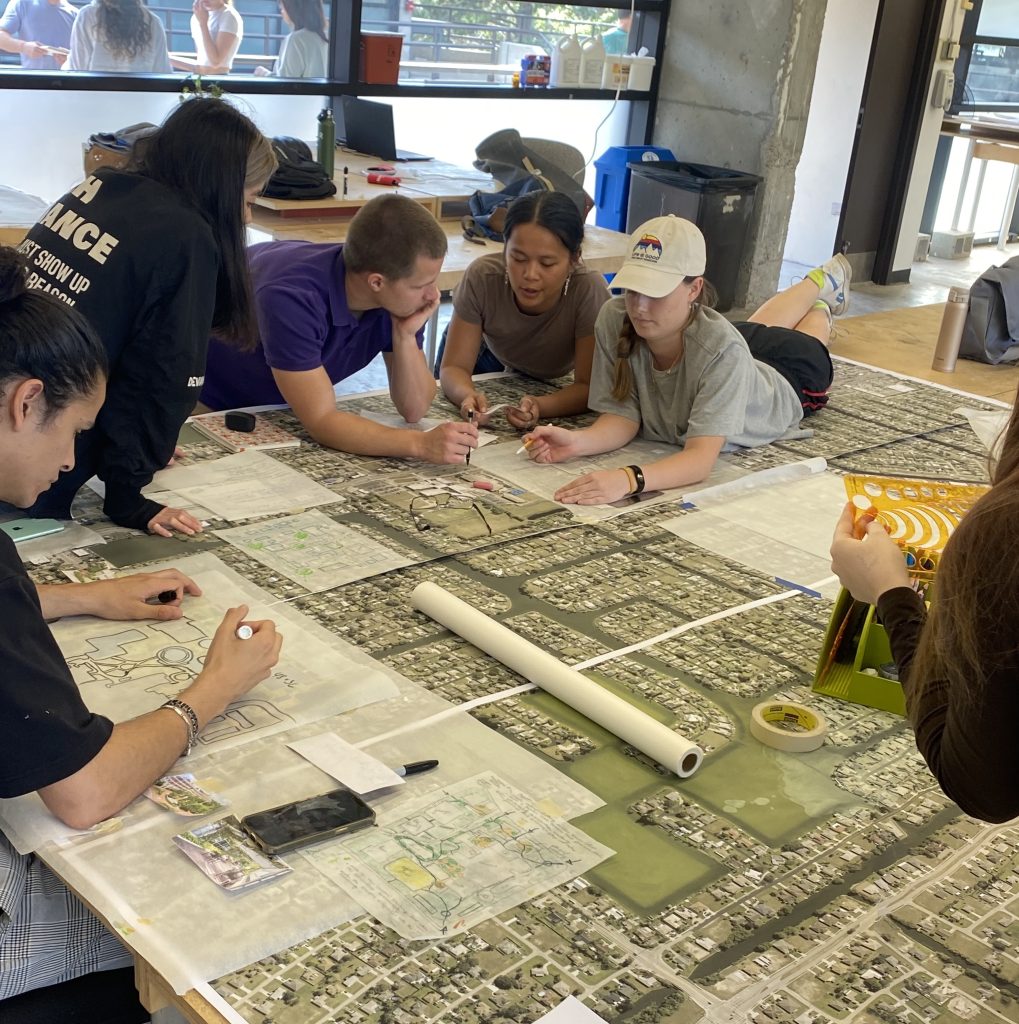
Year 3
Spring 2025
“Future of Florida’s Gulf Coast”
Disciplines: Architecture, Landscape Architecture, Urban & Regional Planning, Journalism, and Construction Management
Location: Various, including Cedar Key; Longboat Key; Fort Jefferson and Key West; Monroe County; Lee County; Pinellas County
Overview: Over the past 5 years the Florida has experienced 4 major hurricanes– Ian, Idalia, Helene, and Milton– causing widespread destruction and roughly $155 billion in damages to the state. Florida’s 500-mile Gulf Coast stands at a critical crossroads. So, how does the Florida Gulf Coast region move forward from here? In Spring 2025, ten cohorts of students and faculty in the College of Design, Construction and Planning are setting out to address these critical challenges. Working across architecture, landscape architecture, urban + regional planning, and sustainability + built environment studies, we will envision creative opportunities for how the Florida Gulf Coast region recover and adapt to future conditions.

